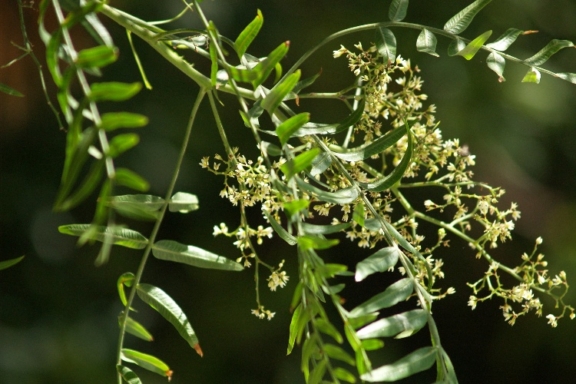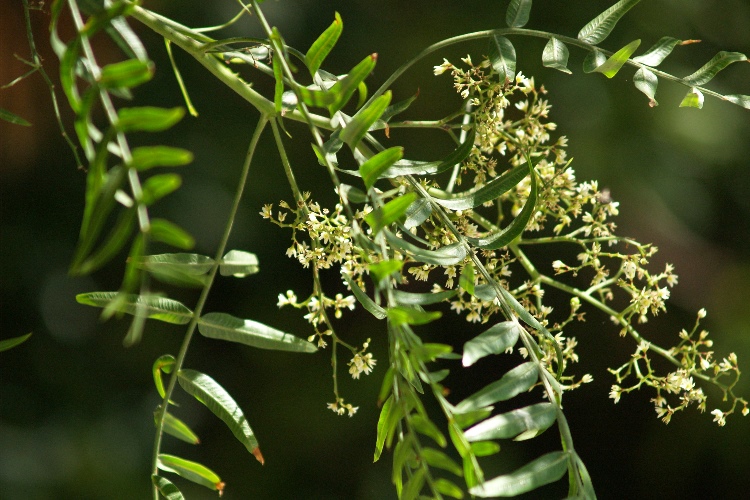
False Pepper Tree
Schinus molle
Family and description
From the Anacardiaceae family, Schinus molle is an evergreen tree that can reach 10 m in height. It is characterized by its irregular canopy with hanging branches and its brown, thick, rough trunk.
The leaves are pinnate, with 20 pairs of linear to lanceolate leaflets, and aromatic when crushed.
The yellow flowers appear between June and December, arranged in axillary conical panicles. They are characterized by having 5 petals and 10 stamens and a diameter of 4mm.
The fruit, a drupe, appears between December and January. It has a pinkish colour, a globose shape, slightly fleshy, with 5 to 7 mm in diameter. Each fruit contains a single seed.
Origin and habitat
Native to the arid zone of northern South America and the Andean deserts of Peru, this tree is well adapted to rocky terrain and slopes, being therefore important in erosion control.
It resists to dryness and, when already developed, it tolerates some frost and salinity.
Uses and curiosities
The pepper tree is propagated by seeds, cuttings or root shoots.
It was originally introduced in Portugal for ornamental purposes, often appearing in urban spaces. Its resin once served to embalm the emperors’ mummies and it has, along with the leaves, various medicinal purposes.
The fruits are used in culinary, ground, having a less intense spicy taste than that of black or white pepper – which justifies the designation of false pepper. In South America they were used to produce an alcoholic beverage.
The specific epithet molle comes from mulli, the name popularly used in Peru to designate this tree.
